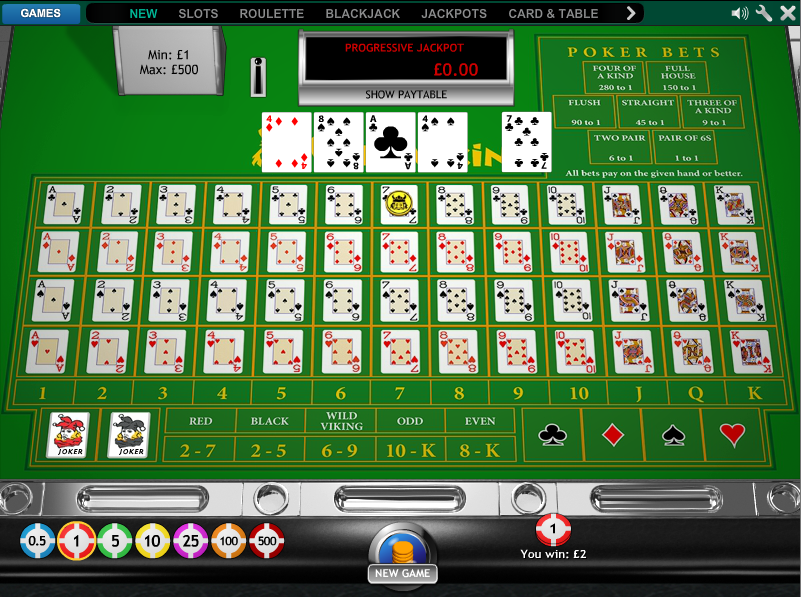Pai Gow Tiles Free Game
by admin
Pai Gow means 'make nine' in Cantonese which is played with one set of Chinese Dominoes. Pai Gow is a popular casino game in China, United States, and Canada. The player is dealt 4 tiles and he/she must divide the tiles into two hands of 2 tiles each. The hands are categorized as 'High Hand' and 'Low Hand' as per value of individual hands. (Pai Gow is Cantonese; Pai Jo is Mandarin; aka Pai Kow) This gambling game is an ancient Chinese or Korean domino game that has become very popular in quite a few Nevada, U.S., casinos. Additional equipment needed: 3 dice to be thrown at the beginning of the game to determine the deal) and a number of chips of varying shapes denoting different.

Pai Gow Tiles Practice
- Pai Gow means 'make nine' in Cantonese which is played with one set of Chinese Dominoes.
- Chinese dominoes set consists of 32 tiles which are divided in two suits or groups. 'Civil' and 'Military'. There are 21 unique combinations. Civil suit contains 2 each of eleven tiles (6-6, 1-1, 4-4, 1-3, 5-5, 3-3, 2-2, 5-6, 4-6, 1-6, 1-5). Military suit contains one each of ten tiles (3-6, 4-5; 2-6, 3-5; 2-5, 3-4; 2-4; 1-4, 2-3; 1-2).
- All dominoes are shuffled and each player takes 4 tiles. Player must make 2 hands of 2 tiles each. The hand with lower value is called 'front hand' and hand with higher value is called 'rear hand'. Front hand can only be compared with front hand and rear hand with rear hand for comparison of two players.
- If player's front hand beats dealer's front hand and player's rear hand beats dealer's rear hand then player wins the round.
- If player's front and rear hands lose to the dealer's front and rear hands respectively, then player loses the round.
- If player's one hand wins and the other loses, then round is a draw.
- If players have a tie while comparing hands then tie is broken according to the ranking of high tile in the hand. If even high tile does not break the tie then dealer wins that hand.
- The hands are ranked as following
- Gee Joon - [4-2] and [2-1] together are highest ranking hand.
- Pairs - Pairs are ranked after Gee Joon (in order of high to low ranking as following). There is no numerical order so this must be remembered.
[6-6] and [6-6]
[1-1] and [1-1]
[4-4] and [4-4]
[3-1] and [3-1]
[5-5] and [5-5]
[3-3] and [3-3]
[2-2] and [2-2]
[6-5] and [6-5]
[6-4] and [6-4]
[6-1] and [6-1]
[5-1] and [5-1]
[6-3] and [5-4]
[6-2] and [5-3]
[5-2] and [4-3]
[4-1] and [3-2] - Wongs - Wongs are nines paired with double-6 or double-1 which are ranked after Pairs. Double-6 combinations outrank double-1.
[6-6] and [6-3]
[6-6] and [5-4]
[1-1] and [6-3]
[1-1] and [5-4] - Gongs - Gongs are eights paired with double-6 or double-1 which are ranked after Wongs. Double-6 combinations outrank double-1.
[6-6] and [6-2]
[6-6] and [5-3]
[6-6] and [4-4]
[1-1] and [6-2]
[1-1] and [5-3]
[1-1] and [4-4] - Combinations - If none of the above combinations are possible then total pips count of both tiles modulus ten is your score.
- Individual Tile Score - In case players have the same score as calculated above, then high tile in their hands are compared. If player is tied with dealer on high tile value as well, then dealer wins the hand. Tiles are individually ranked as following
[6-6] Teen
[1-1] Day
[4-4] Yun
[3-1] Gor
[5-5] Mooy
[3-3] Chong
[2-2] Bon
[6-5] Foo
[6-4] Ping
[6-1] Tit
[5-1] Look
[6-3] and [5-4] Chop Gow
[6-2] and [5-3] Chop Bot
[4-3] and [5-2] Chop Chit
[4-1] and [3-2] Chop Ng
[4-2] and [2-1] Gee Joon
[4-2] and [2-1] are highest hand together but lowest tiles on individual ranking. - The first player to win 15 rounds wins the game.
- Read more about this game on Wiki.